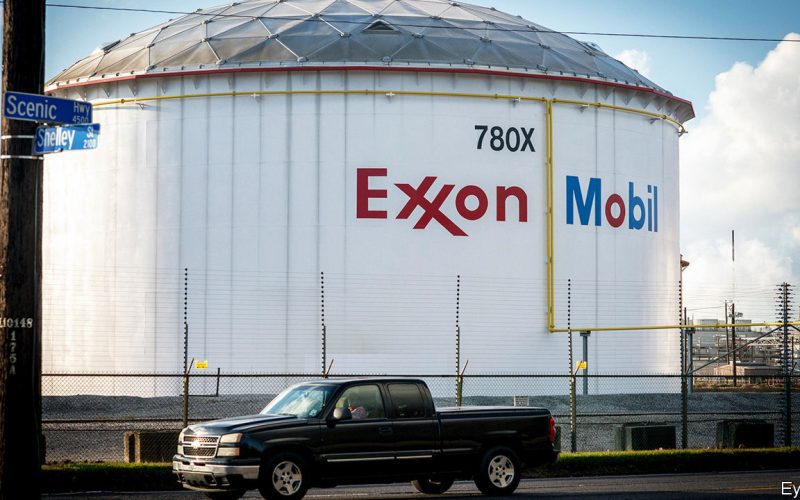In an era where global energy policies are increasingly focused on sustainability and reducing carbon emissions, the emergence of new petro-states seems anachronistic. However, ExxonMobil’s massive project in Guyana has the potential to create what might be the world’s last petrostate. This article delves into the various aspects of the Exxon project, its implications for Guyana, and the broader geopolitical and environmental impacts.
The ExxonMobil Project: An Overview
Petrostate
ExxonMobil, one of the largest oil and gas companies in the world, has been exploring and developing oil fields off the coast of Guyana since 2015. The company’s Stabroek Block, a 6.6 million-acre area, has proven to be exceptionally rich in oil reserves. As of 2023, ExxonMobil and its partners have discovered more than 11 billion barrels of recoverable oil and gas resources in the area.
Discoveries and Investments
The Stabroek Block has been the site of several significant discoveries, including the Liza, Payara, and Yellowtail fields. These discoveries have led to substantial investments by ExxonMobil and its partners, Hess Corporation and China’s CNOOC Limited. The initial phase of the project, Liza Phase 1, began production in late 2019 and was followed by Liza Phase 2 in 2022. With production expected to ramp up in the coming years, Guyana is poised to become one of the world’s largest oil producers per capita.
Economic Implications for Guyana
Boost to GDP and National Revenue
Guyana, a small South American country with a population of approximately 800,000, has traditionally relied on agriculture and mining for its economic stability. The ExxonMobil project promises to transform Guyana’s economy dramatically. The International Monetary Fund (IMF) projects that Guyana’s GDP could grow by an astounding 86% in a single year due to oil revenues. This influx of wealth could lift thousands out of poverty and significantly improve the country’s infrastructure and public services.
Challenges of Resource Management
Despite the potential economic benefits, managing this sudden wealth poses significant challenges. The “resource curse,” a phenomenon where countries with abundant natural resources experience less economic growth and worse development outcomes due to mismanagement and corruption, is a real threat. Guyana must establish robust governance frameworks to ensure that oil revenues are used effectively and equitably.
Geopolitical Impacts
Regional Influence
Guyana’s emergence as a major oil producer could shift the balance of power in the Caribbean and Latin American regions. The country’s newfound wealth and strategic importance could enhance its influence in regional organizations like CARICOM and the Organization of American States (OAS). Additionally, Guyana’s oil resources could attract interest and investment from major global powers, further integrating it into the global geopolitical landscape.
International Relations
The ExxonMobil project also has implications for Guyana’s relations with neighboring Venezuela. The two countries have a longstanding territorial dispute over the Essequibo region, which includes parts of the Stabroek Block. The potential for increased tensions is significant, particularly if Venezuela attempts to assert its claims more aggressively in light of Guyana’s growing oil wealth.
Environmental Concerns
Climate Change and Carbon Emissions
The development of new oil fields in Guyana comes at a time when the world is grappling with the urgent need to reduce carbon emissions to combat climate change. The ExxonMobil project could result in substantial greenhouse gas emissions, contradicting global efforts to transition to renewable energy sources. This raises important ethical questions about the long-term sustainability of fossil fuel development.
Environmental Risks
Offshore oil drilling poses several environmental risks, including oil spills, which can have devastating effects on marine ecosystems. The Guyanese government and ExxonMobil must implement stringent environmental safeguards to minimize these risks. Effective monitoring and response strategies will be crucial to protect the region’s biodiversity.
Socioeconomic Impacts
Employment and Skills Development
The ExxonMobil project has the potential to create thousands of jobs in Guyana, both directly in the oil sector and indirectly through related industries. However, ensuring that these employment opportunities benefit the local population requires significant investment in education and skills development. ExxonMobil and the Guyanese government must work together to build a workforce capable of supporting the burgeoning oil industry.
Social Equity
Oil wealth can exacerbate social inequalities if not managed properly. Ensuring that the benefits of the ExxonMobil project are distributed equitably across all segments of society will be critical to maintaining social cohesion. This includes addressing the needs of indigenous communities and other marginalized groups who may be disproportionately affected by the environmental and social impacts of oil development.
Comparative Analysis: Guyana vs. Other Petro-States
To understand the potential trajectory of Guyana’s development as a petrostate, it is useful to compare it with other countries that have undergone similar transformations. The following table provides a comparative analysis of Guyana and three other notable petrostates: Norway, Nigeria, and Venezuela.
| Aspect | Guyana | Norway | Nigeria | Venezuela |
|---|---|---|---|---|
| Initial Oil Discovery | 2015 | 1969 | 1956 | 1922 |
| GDP Growth Rate (Projected) | 86% (2024) | 1.3% (2023) | 3.2% (2023) | -7.2% (2023) |
| Governance Framework | Developing | Strong | Weak | Weak |
| Resource Management | Risk of Resource Curse | Effective | Ineffective | Ineffective |
| Environmental Safeguards | Developing | Strong | Weak | Weak |
| Social Equity | Focus on Inclusive Growth | High | Low | Low |
| Regional Influence | Increasing | Stable | Decreasing | Decreasing |
Analysis Table: Key Factors Impacting Guyana’s Oil Future
The following table outlines key factors that will influence the success and sustainability of Guyana’s transformation into a petrostate.
| Factor | Description | Potential Impact |
|---|---|---|
| Governance and Transparency | Effective management of oil revenues and corruption prevention | High Positive Impact |
| Environmental Regulations | Implementation of stringent environmental safeguards | High Positive Impact |
| Social Policies | Equitable distribution of oil wealth and social investments | High Positive Impact |
| Economic Diversification | Investment in non-oil sectors to reduce dependency | Medium Positive Impact |
| Regional Relations | Diplomatic strategies to manage territorial disputes | Medium Positive Impact |
| Global Oil Market Dynamics | Fluctuations in oil prices and demand | High Negative Impact |
| Climate Change Policies | Global shift towards renewable energy sources | High Negative Impact |
Conclusion
The ExxonMobil project in Guyana represents both a tremendous opportunity and a significant challenge for the country. The potential economic benefits could transform Guyana into a wealthy nation, but only if the wealth is managed effectively and equitably. Environmental and social considerations will be crucial to ensuring that this transformation is sustainable and beneficial for all Guyanese people.
Guyana’s journey to becoming a petrostate will be closely watched by the international community, offering lessons on resource management, governance, and sustainable development in an era of increasing environmental consciousness. As the world grapples with the twin challenges of energy security and climate change, Guyana’s experience will provide valuable insights into the complex interplay between economic development and environmental stewardship.











